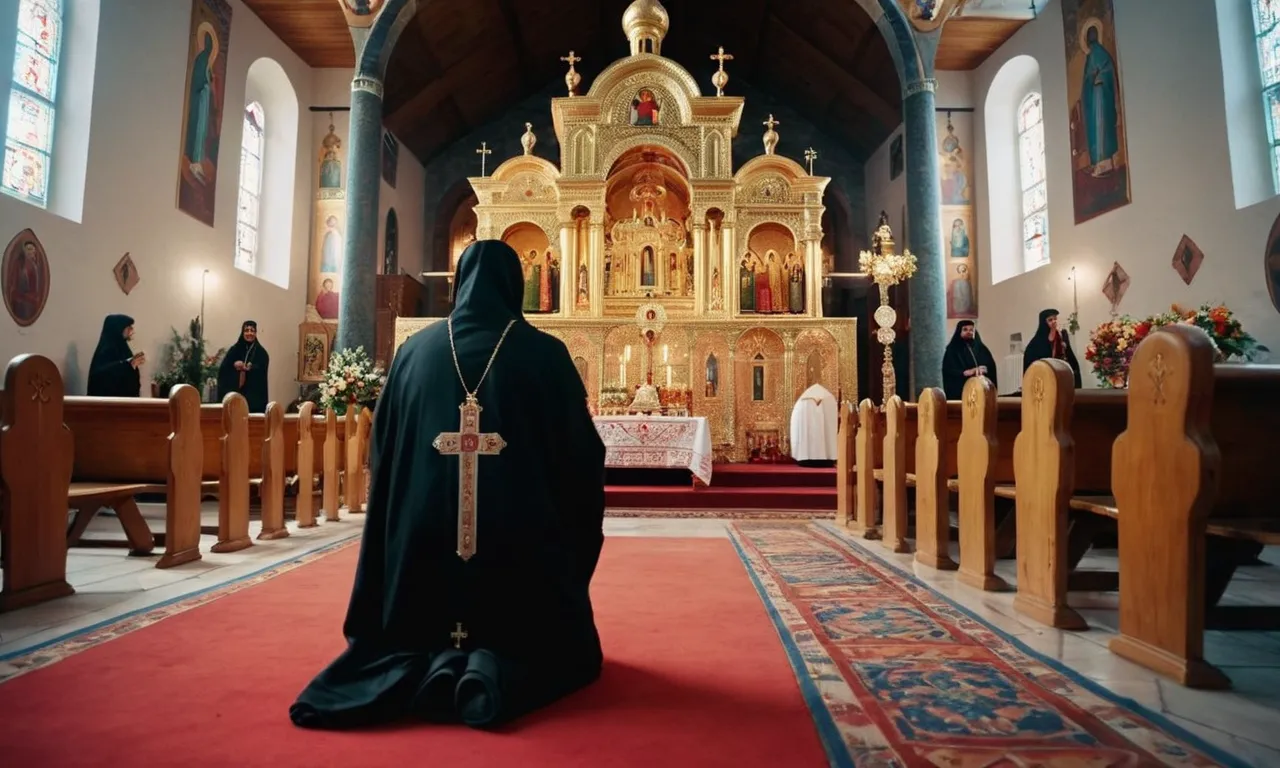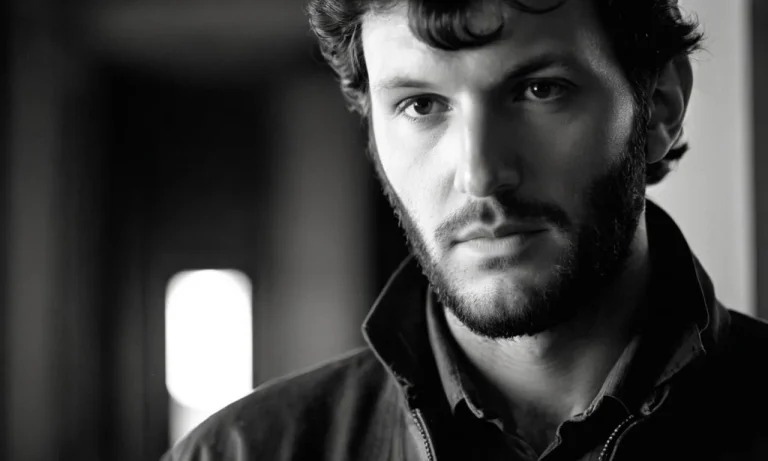How To Convert To Orthodox Christianity: A Step-By-Step Guide
Converting to Orthodoxy is a profound spiritual journey that requires commitment, patience, and an open heart. If you feel called to join the Orthodox Church, you’ve come to the right place.
If you’re short on time, here’s a quick answer to your question: To convert to Orthodoxy, you’ll need to find a parish, attend services regularly, meet with the priest for catechism classes, choose a patron saint, get baptized and/or chrismated if needed, and formally join the Church through the rites of initiation.
In this comprehensive guide, we’ll walk through the detailed process of converting to this ancient Christian faith, including finding a parish, learning about Orthodox beliefs and practices, completing catechism, getting baptized/chrismated, choosing a patron saint, and formally joining the Church.
Choosing an Orthodox Parish
Attend liturgy at different Orthodox churches
When considering converting to Orthodoxy, it’s important to visit and attend the liturgy at a few different Orthodox churches. This allows you to get a feel for the variations in worship styles and customs among the different Orthodox jurisdictions (Greek, Russian, Antiochian, etc.).
Pay attention to the music, chanting, icons, and overall atmosphere. Does it draw you in spiritually? Can you envision yourself worshipping there regularly?
Consider jurisdictional differences
The many Orthodox jurisdictions in America mainly differ in terms of ethnic origin and administrative structure but share the same doctrine and sacraments. Key distinctions:
But you can certainly attend and even become a member of a parish from a different background than your own if the worship style and community appeal to you. For example nearly 20% of Antiochian Orthodox Christians are now converts from Protestant backgrounds.
Meet with the priest
Schedule a meeting with the parish priest before deciding to convert. An introductory meeting allows you to:
Come prepared with questions and an open heart. Conversion to Orthodox Christianity is a big step so make sure you take the time to choose the right parish with a priest that can mentor you in the faith. 🙏
Learning about Orthodox Beliefs and Practices
Attend church services regularly
Attending Orthodox church services regularly is crucial for learning about the faith. Services follow a liturgical structure filled with rich symbolism and sacred rituals that have been passed down for centuries.
By participating in the Divine Liturgy and other services throughout the church calendar, you’ll gain insight into Orthodox theology and spirituality. Pro tip: sit near the front so you can fully observe what’s happening at the altar.
Read up on Orthodoxy
Hit the books! Reading is essential for getting grounded in Orthodox beliefs and practices. Some great introductions are The Orthodox Church by Timothy Ware and The Orthodox Way by Kallistos Ware. For an overview of Orthodox theology, try The Orthodox Faith by Fr. Thomas Hopko.
Discuss what you’re learning with your priest and parishioners – they’ll have book recommendations too. The more you read, the more Orthodoxy will start to click.
Participate in parish life and ministries
Immerse yourself in the life of your parish by participating in ministries, attending Bible studies and social events, and volunteering. Getting to know people and being involved will give you a hands-on look at how Orthodoxy is lived.
You’ll build relationships with fellow parishioners who can answer questions and serve as mentors. According to a 2022 survey by Assembly of Canonical Orthodox Bishops of North and Central America, over 80% of Orthodox Christians say participating in parish life was instrumental in their spiritual growth.
Get to know the saints
The saints provide inspirational models of Orthodox life. Read their stories and learn about their struggles and virtues. Ask your priest for saints to become familiar with. Some important ones are St. Mary of Egypt, St. John Chrysostom, St. Seraphim of Sarov, and St. Herman of Alaska.
Have patron saints whose path resonates with you. Talk to them in prayer and ask them to intercede for you. Over time, you’ll develop a sense of their unique personalities. Getting to know the saints goes hand in hand with learning Orthodoxy.
Undergoing Catechism and Initiation Rites
Go through formal catechism classes
An essential step when converting is to enroll in a formal catechism class, which educates the convert on Orthodox theology, liturgy, rituals, lifestyle and responsibilities of being Orthodox. These classes typically last 6 months to a year and are led by a priest or appointed teacher.
Attending the classes shows your commitment to the faith and gives you a solid doctrinal foundation before entering the church.
During the catechism, you’ll learn about important topics like the Orthodox view of salvation, the sacraments, veneration of saints, prayer, fasting, free will and sin. The classes study scripture and church history while explaining the significance behind various traditions.
This thorough religious instruction ensures you understand what you’re entering into by joining this ancient faith.
Get baptized and/or chrismated if needed
If you haven’t already been baptized in the name of the Holy Trinity, you must receive Orthodox baptism. For those previously baptized in Trinitarian form (nearly all Catholics and some Protestants), you still need to be officially received into the Orthodox Church through the Sacrament of Chrismation.
In chrismation, you’re annointed with holy oil called “myrrh” as the priest makes the sign of the cross on parts of your body. He also says prayers to “seal” you with the gift of the Holy Spirit.
While baptism wash away your former sins, chrismation gives you guidance and grace to live an Orthodox life after you’ve been cleansed of impurity. Both rituals indicate your entrance into God’s family.
Choose a patron saint
It’s customary for converts to take a patron saint’s name at their chrismation since Orthodox typically have saint names they go by. Your patron will become your heavenly protector and role model for emulating a virtuous life.
To ensure you choose an appropriate patron, tell the priest your conversion story. He’ll suggest saint names fitting your background, struggles or intents with joining Orthodoxy. For instance, you might choose:
- St. Augustine if converting from worldly living to monasticism
- St. Moses the Black if overcoming past life of crime or slavery
- St. Olga as an activator of faith if formerly atheist or agnostic
Once you select your patron, you’ll rejoice in having a powerful heavenly advocate to inspire your spiritual journey. As Orthodox tradition says, “A church with no saints has no protection!”
Officially Joining the Orthodox Church
Formally becoming a member of the Orthodox Church is a meaningful process that signifies full commitment to the faith. There are three primary steps involved in officially converting:
Participate in rites of initiation
Catechumens (those desiring to convert) typically go through a period of intense study and preparation before being received into the Church. When ready, catechumens participate in rites of initiation like baptism, chrismation (anointing with oil), and first communion.
These sacraments bring new members into the body of Christ and the Orthodox community.
Receive the Eucharist
After being received into the Church, new members then regularly partake of the Eucharist (Communion) during Divine Liturgy. This involves receiving consecrated bread and wine which Orthodoxy teaches becomes the actual Body and Blood of Jesus Christ.
Partaking expresses unity with Christ and the Church.
According to a 2020 religious landscape study, over 267 million Christians worldwide identify as Orthodox. For these adherents, Eucharist is the focal point of worship and spiritual life in Orthodoxy.
Begin new spiritual journey as Orthodox Christian
While initiation rituals mark formal entry into the Orthodox Church, the spiritual journey is only just beginning. New members work to grow in faith and knowledge of Jesus Christ through study, worship, partaking of sacraments, prayer, fasting, and performing good works.
It is an ongoing process of learning to live as authentic Orthodox Christians.
Becoming Orthodox is very meaningful. As conveyed on Assembly of Canonical Orthodox Bishops of the USA:
| “To embrace Orthodoxy is not simply to adopt a set of beliefs, but to enter into communion with the Orthodox Church throughout the world, in time and space.” |
Official conversion marks a major milestone along that profound spiritual road.
Conclusion
Converting to Orthodoxy requires commitment, patience, and an open mind and heart. But for those who feel called to this ancient faith, the spiritual rewards are infinite. With prayer, discernment, and the guidance of your priest and parish, you too can find your place in the Orthodox Church.
May God bless you on this sacred journey.







